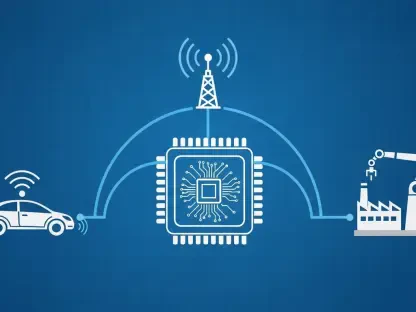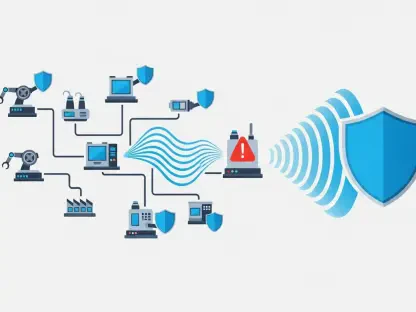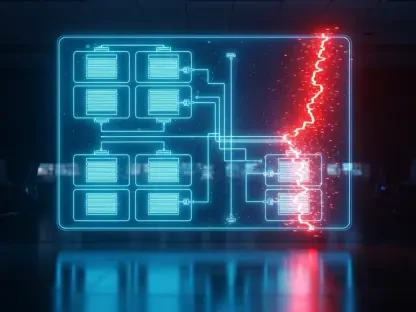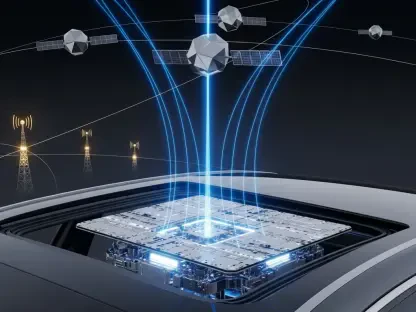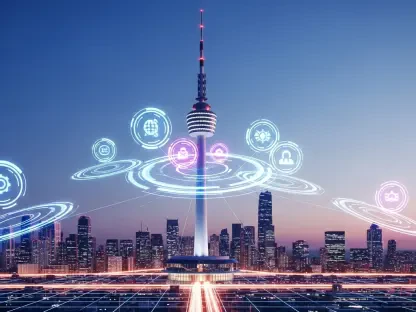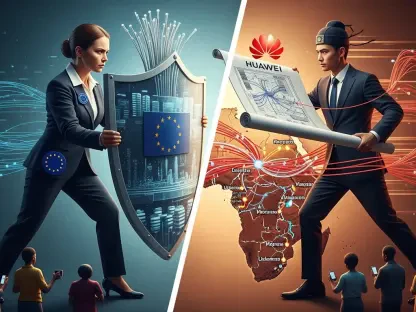What happens when 80,000 passionate fans at MetLife Stadium all attempt to upload videos of a game-winning goal during the 2026 FIFA World Cup? The sheer volume of data could cripple a lesser network, leaving attendees frustrated and disconnected, but Verizon is tackling this monumental challenge head-on with a groundbreaking 5G upgrade at the iconic venue in Meadowlands, New Jersey. This ambitious project isn’t just about keeping up with demand—it’s about redefining what connectivity means at major events.
The significance of this upgrade cannot be overstated. As MetLife Stadium prepares to host pivotal matches of the 2026 FIFA World Cup, alongside blockbuster concerts, the expectation for seamless, high-speed internet has reached unprecedented levels. Fans today are not mere spectators; they are active participants, sharing live moments and engaging with content in real time. Verizon’s initiative ensures that this digital interaction remains uninterrupted, setting a new standard for stadium technology and fan experience on a global stage.
The Critical Role of Connectivity for Global Events
Hosting international spectacles like the FIFA World Cup places immense pressure on a venue’s infrastructure. MetLife Stadium, with its capacity for massive crowds, must deliver flawless connectivity to meet the needs of tech-savvy attendees. A single dropped connection during a crucial match moment could sour an otherwise thrilling experience, highlighting why advanced 5G networks are essential for modern arenas.
Verizon recognizes that the stakes extend beyond convenience. Poor network performance can damage the reputation of both the venue and the events it hosts, especially when global audiences are watching. By prioritizing robust 5G capabilities, the company aims to transform MetLife Stadium into a benchmark for digital excellence, ensuring that every fan’s upload or stream happens without a hitch.
This focus on connectivity also reflects a broader shift in how large-scale events are experienced. As digital engagement becomes a core part of attendance, stadiums worldwide are racing to adapt. Verizon’s efforts at MetLife underscore a commitment to staying ahead of this curve, preparing for the data demands of 2026 and beyond.
Inside Verizon’s Massive 5G Transformation
The scope of Verizon’s overhaul at MetLife Stadium is staggering, designed to handle the intense data traffic of major events. Over 2,400 antennas, supported by 6 million feet of fiber, have been installed to provide comprehensive coverage across the stadium’s interior and even out to surrounding parking areas. This extensive infrastructure ensures that no corner of the venue is left without high-speed access.
Innovative design plays a key role in this upgrade. Antennas are strategically placed under seats to directly serve fans in the stands, while towering MatSing ball antennas—the tallest of their kind in any U.S. stadium—boost both 4G and 5G signals. Additionally, a strong emphasis on uplink capacity addresses the modern trend of fans uploading content in real time, ensuring smooth sharing during peak moments of games or concerts.
Reliability remains a cornerstone of the project. A large generator and dedicated server room stand ready to maintain network uptime, even under the heaviest usage. Plans to add 85 more millimeter-wave 5G antennas in the coming months further demonstrate Verizon’s forward-thinking approach. This multi-faceted strategy showcases a determination to not only meet current needs but to anticipate future challenges through 2026.
Expert Perspectives on Building the Future of Stadium Networks
Insights from Verizon’s team reveal the meticulous planning behind this technological leap. Engineer Michel Brennan, speaking during a recent tour of the facility, emphasized the network’s scalability. “The goal is a system that can manage the data surge of a World Cup final or a packed concert without faltering,” Brennan noted, underscoring the precision required for such high-stakes environments.
Colleague Peter Festa highlighted an often-overlooked aspect of the project: collaboration. By allocating equipment space for competitors like AT&T and T-Mobile, Verizon fosters an industry-wide spirit of cooperation at MetLife Stadium. This approach ensures that multiple providers can enhance connectivity, benefiting fans regardless of their carrier.
These expert accounts paint a vivid picture of a project driven by both technical expertise and strategic vision. The balance of cutting-edge infrastructure with a collaborative mindset illustrates how Verizon is crafting a network not just for today, but for the evolving demands of tomorrow’s events. Their work signals a new era for stadium connectivity, where innovation and partnership go hand in hand.
Real-World Benefits for Fans and Organizers
The upgraded 5G network at MetLife Stadium promises tangible advantages for everyone involved in major events. Fans can look forward to seamless streaming and rapid uploads, whether they’re cheering from the stands or tailgating outside. This enhanced connectivity means capturing and sharing unforgettable moments without the frustration of buffering or delays.
Event organizers stand to gain significantly as well. With a robust network in place, opportunities for real-time fan engagement through apps, interactive content, or live polls become more viable. Collaboration with Verizon can also enable tailored solutions, such as temporary network boosts for specific high-traffic events, ensuring a smooth experience for all attendees.
Beyond immediate benefits, this project offers a blueprint for other venues. Stadiums aiming to modernize can learn from Verizon’s focus on uplink capacity and comprehensive coverage. Starting with an analysis of current data usage patterns and scaling infrastructure accordingly can help other locations prepare for future demands, mirroring the success seen at MetLife.
A Lasting Legacy of Innovation
Looking back, Verizon’s bold 5G upgrade at MetLife Stadium stood as a testament to proactive innovation, setting the stage for unforgettable experiences during the 2026 FIFA World Cup and beyond. The intricate network of antennas, fiber, and strategic design tackled the monumental challenge of connecting tens of thousands simultaneously. Every element was crafted with precision to ensure reliability under pressure.
Reflecting on this achievement, the next steps for stadiums worldwide became clear. Venues should prioritize scalable technology investments, focusing on user-driven needs like upload speeds and coverage breadth. Engaging with network providers to customize solutions for specific events could further elevate fan satisfaction.
Ultimately, the impact of such advancements pointed toward a future where connectivity was no longer a barrier but a bridge to deeper engagement. Stadiums had the opportunity to build on this model, adopting cutting-edge systems to transform how global audiences experienced live events. This legacy of digital excellence offered a roadmap for others to follow, ensuring that technology amplified the thrill of every moment.


